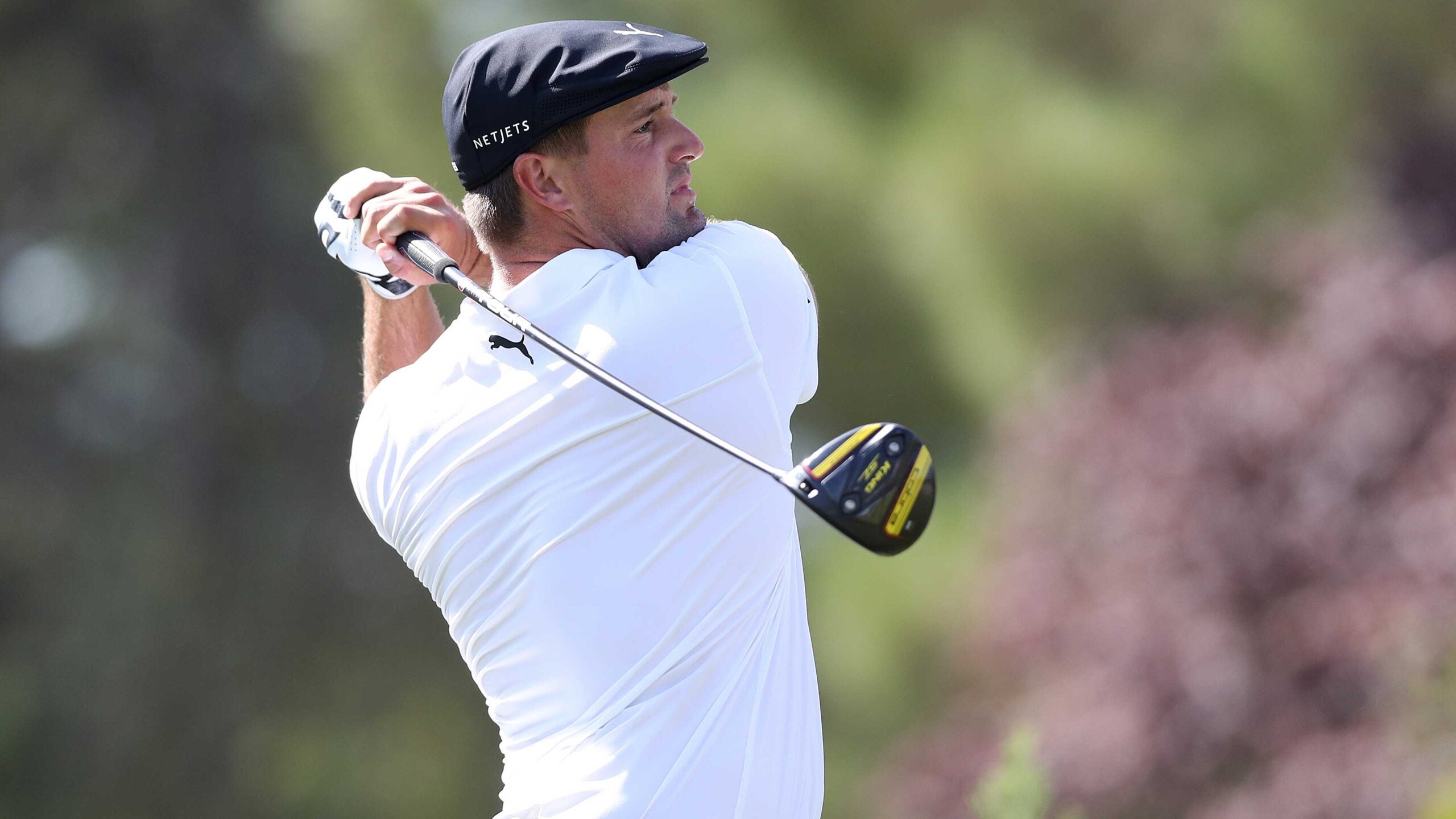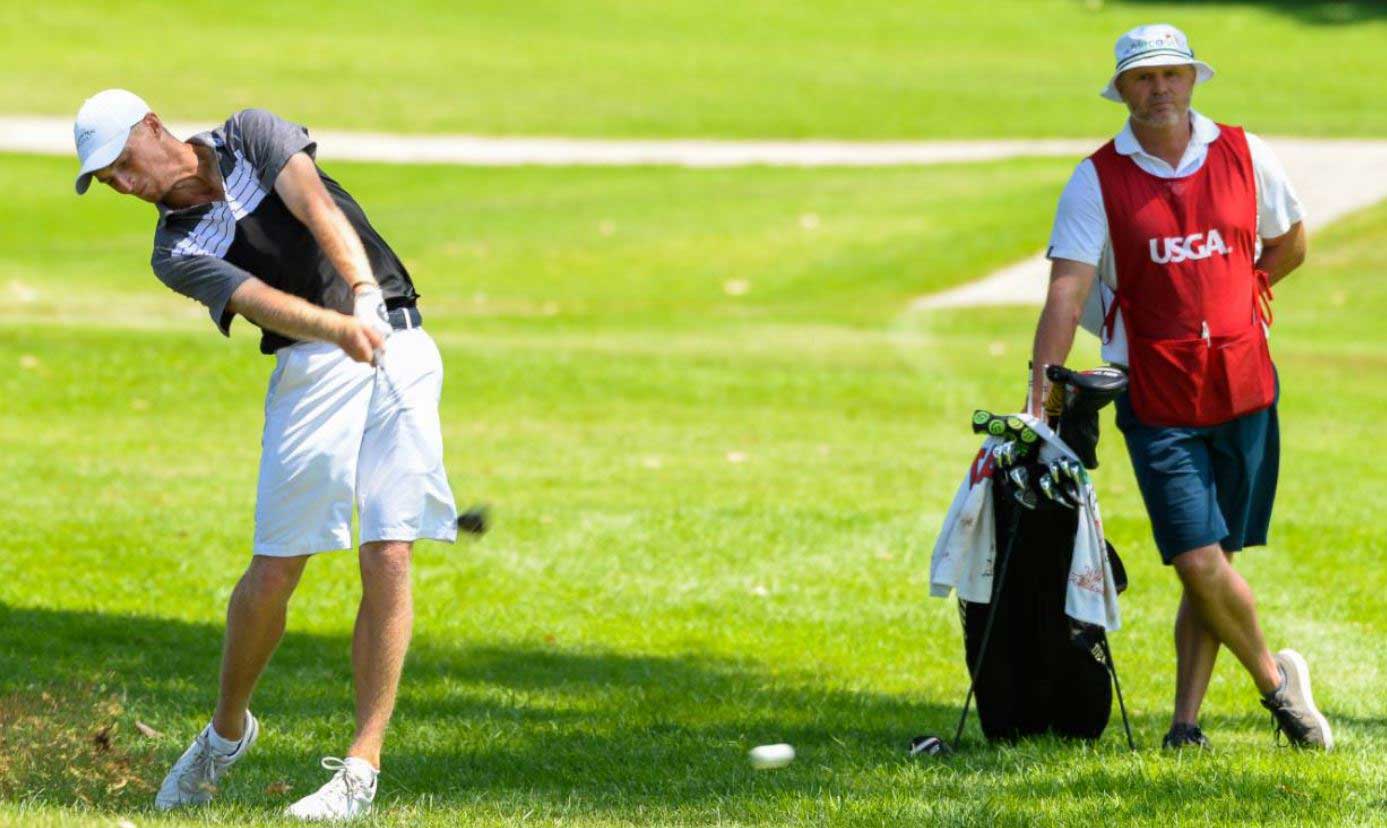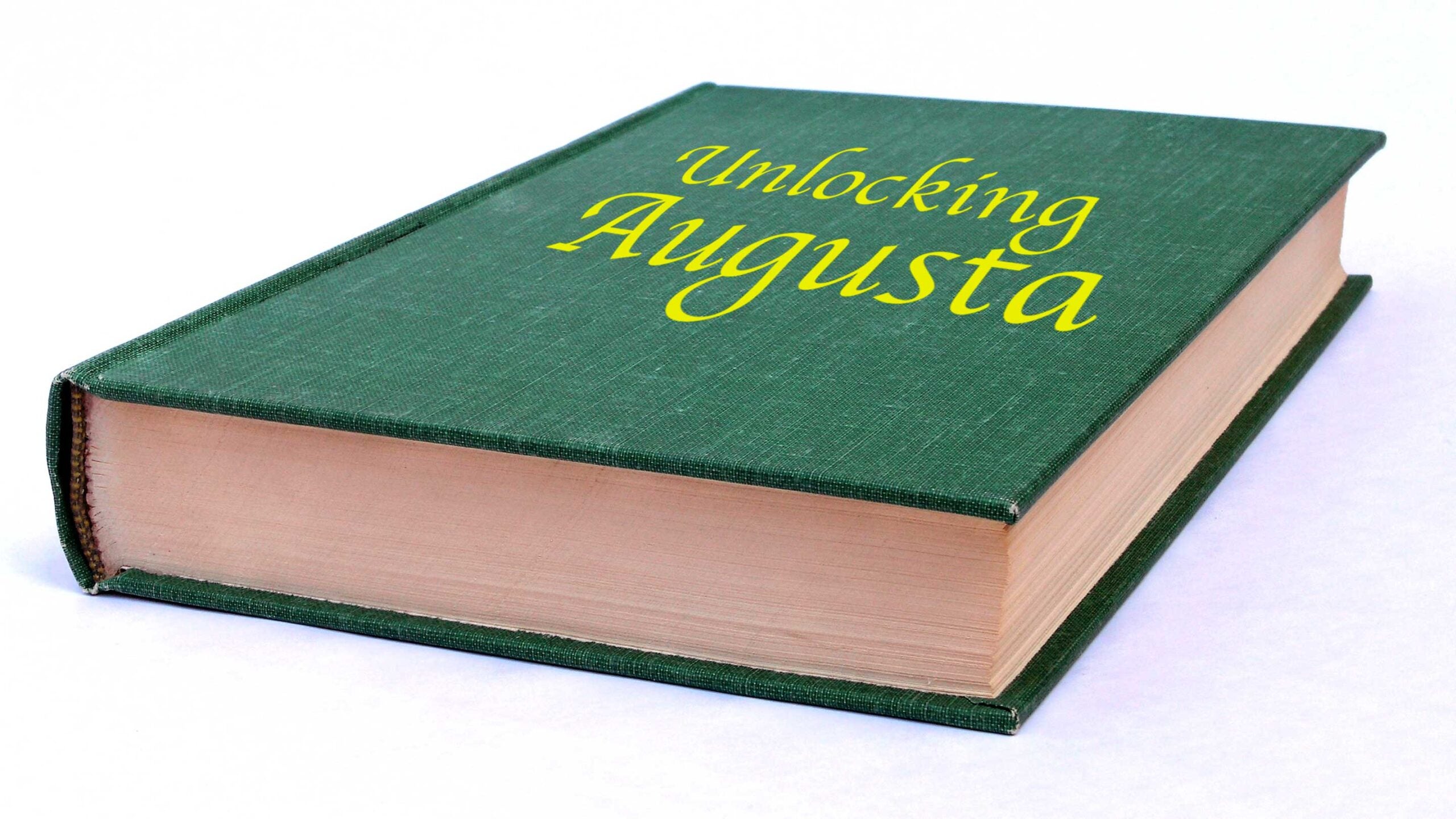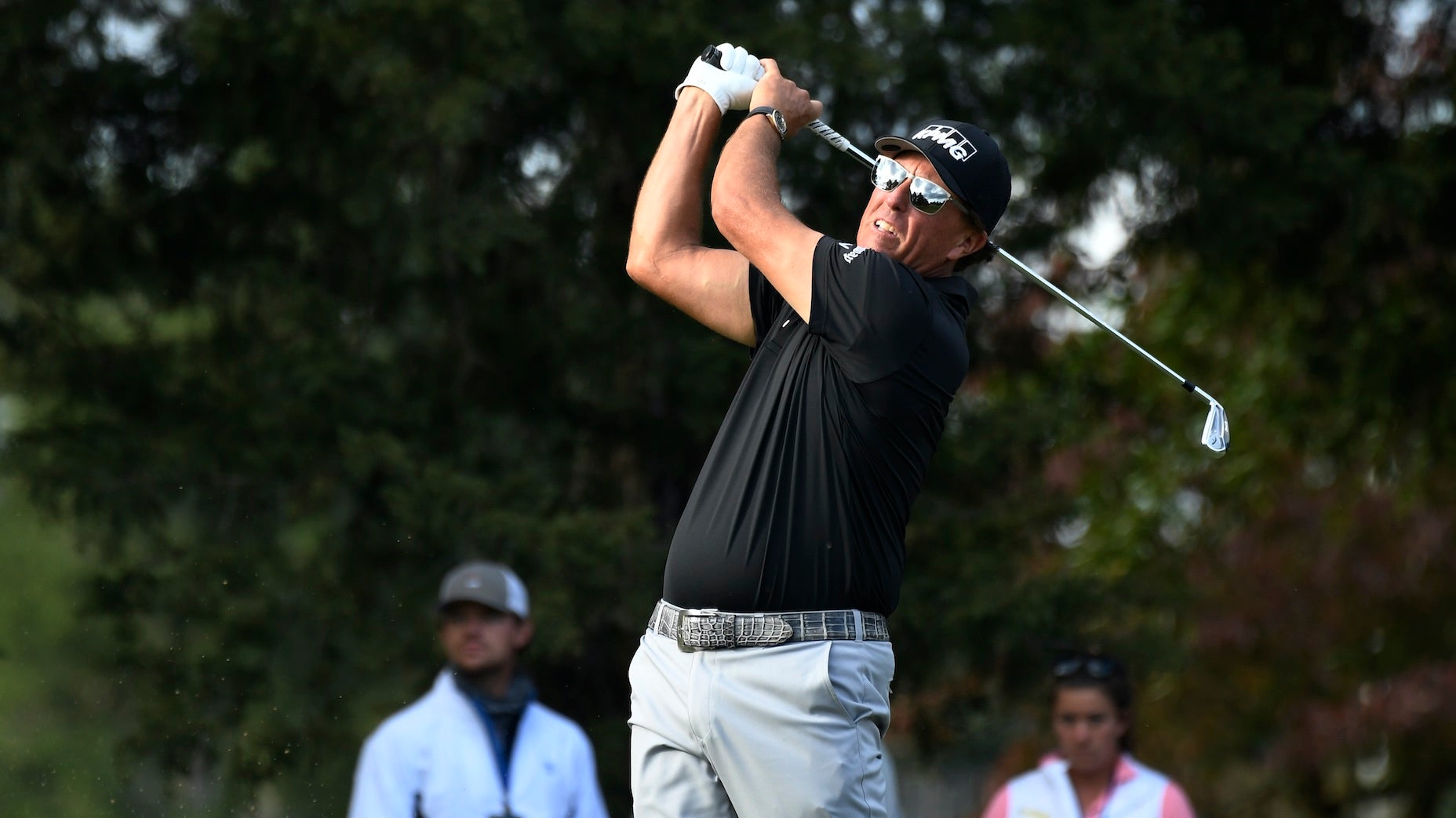Ed. note: GOLF has partnered with CDW to reveal how the best golfers in the world develop trustworthy, secure game plans for the Masters. In this series, we’ll dig in to the science and data competitors rely on to protect against the pitfalls and pressures of Augusta National.
***
In early 2015, Southern Methodist University golf coach Jason Enloe had a thorny problem: his most talented player, Bryson DeChambeau, was also the most hyper-aggressive. There wasn’t a flag DeChambeau wouldn’t fire at, and the inevitable bogeys were occasionally sabotaging his rounds. Enloe pleaded with his star junior to play more thoughtfully but couldn’t quite get through to DeChambeau, famously a physics major. “Bryson is very analytical, as everyone knows now,” Enloe says. “I felt like he would benefit from a different way of looking at things.”
So Enloe brought in a big gun: Scott Fawcett, a former touring pro who was using math to deconstruct the mysteries of the game. Poring over ShotLink data and Google Earth images of hundreds of courses, Fawcett invented Decade, a course management system that helps players optimize and trust their decision-making in the same way a launch monitor can help them max out their carry distance. The name itself is a sales pitch, implying that a lifetime of golf knowledge can be distilled into a series of decision trees.

Fawcett met with DeChambeau and the other Mustangs in an indoor classroom, because NCAA rules prohibited him from doing any “coaching” on the course. He laid out his case on how to play the game and protect against mental mistakes, using detailed statistics to hammer home the points. DeChambeau’s brain was so stimulated you could practically hear the neurons crackling.
This four-hour seminar would have a profound effect on the future of golf. In the short-term, DeChambeau went on an almighty tear, lowering his scoring average by more than a full shot semester-over-semester and becoming only the fifth player ever to win the NCAA Championship and U.S. Amateur in the same year. It also sent him down a path that culminated in his game-changing U.S. Open win two months ago. Now DeChambeau is on a collision course with Augusta National, and the surrounding hysteria evokes Godzilla lumbering toward Manhattan. What hath Fawcett wrought?
“My job is to remove limiting beliefs,” says Fawcett, who has become an advisor to more than 50 touring pros, while the Decade app has been employed by more than 200 college programs. “Part of me feels bad because every romantic piece of folklore these old golfers grasp onto is wrong. They love to talk about the way they used to do it, but they used to do it wrong. The math doesn’t lie.”
And what does all of this mean for DeChambeau’s impending assault on Augusta National? “If he drives it like he did at Winged Foot, and he’s just as efficient with his approach shots, he’s gonna burn that place to the ground,” Fawcett says. “Gawd, I can’t wait.”

Fawcett is a Plano, Texas, native. He learned the game from his father Brent, who carried a plus-2 index. After a year at Sam Houston State, Fawcett matriculated to Texas A&M. Enloe was a friend and competitor while playing for SMU, and he describes Fawcett as a strong ballstriker with plenty of speed whose considerable potential was short-circuited by faulty wiring. “He just didn’t have the temperament, and Scott will tell you that,” Enloe says. “He didn’t have the mental discipline, the head skills, that it takes. He was very talented but he lacked maturity, like most 20-year-olds.”
Fawcett chased the dream on various mini-tours for six years and then went into the straight world, putting his finance and economic degrees to work by trading securities and starting an electrical company in the newly deregulated Texas market. “I was just going to do it for a year,” he says, “but the money was so good, especially after I had been broke my whole life playing golf.”
View this post on InstagramA post shared by Scott Fawcett (@decade_golf) on
Fawcett regained his amateur status in 2006 but couldn’t resist the siren song of the Tour forever. In 2008, at 35, he made it through all four levels of Q school, earning conditional status on the Korn Ferry Tour. He knocked around for four more years but could never break through. Along the way he became entranced by the writings of golf-stats savant Mark Broadie and began to apply similar critical thinking to the conventional wisdom that had shaped his own career.
“How many times were we told to just get the ball in play off the tee?” Fawcett asks. “Well, what is the cost of losing 20 yards by hitting 3-wood? You can drop down to a 2-iron and you will definitely hit more fairways but now you’re 70 yards back from where your driver would be. How do you decide what is the right play? I came to realize it was entirely possible that someone could be a great golfer but a bad strategist and that was an easy way to lose your card. It was a way to justify to myself why I didn’t make it.”
Fawcett crunched all the numbers and deduced that any given Tour player picks up roughly .07 strokes for every time he swings a driver instead of a shorter club. If he wields the big stick six or seven more times, that equates to securing half a stroke per round, in a game where fortunes are won and lost on much smaller margins.
Inside the Augusta National playbook that helps players outsmart the courseBy: Alan Shipnuck
At the same time, ShotLink has revealed that the pros aren’t nearly as precise with their irons as commonly believed. This was driven home during the recent telecast of the Zozo Championship, when commentator Paul Azinger, a card-carrying member of the Old School, blurted out regarding a player facing a full-swing wedge from the fairway, “The guys can land the ball within a 3-foot circle most of the time.”
Fawcett’s friend and collaborator Lou Stagner, whose Twitter name is Golf Stat Pro, immediately tweeted that, from 100 yards, only 3% of shots, in fact, finish inside of 3 feet — while 43% are outside of 15 feet. The Decade system is built on the unassailable truths in these dispersion patterns. It provides probabilities on where the ball will wind up for every club and yardage, helping players pick targets into the greens that reduce their chance of making a bogey.
“Yes, it would be cool to draw a 6-iron into a back-left pin position, but that’s not the right play,” Fawcett says, noting the steep penalty for missing short, long or left in this hypothetical. “You play to the middle of the green and two-putt and pick up your birdies somewhere else. You gain shots by not losing shots on purpose.”
Every week Fawcett distributes to his clients on the PGA and Korn Ferry tours a packet with detailed notes on every hole of the host course; click here for insights from his Augusta National dossier. (Recently, the likes of Stewart Cink and Darren Clarke have bought the Decade app to absorb the methodology on their own terms.) Speaking more generally, Fawcett says, “I hate the words aggressive and conservative because they’re emotional, but playing super-aggressive off the tee and super-conservative into greens is basically the optimal strategy.”

Fawcett’s playbook for Augusta National (the vertical line represents 300 yards) includes this stats-backed advice on the drivable par-4 3rd (above): “Driver on this hole will keep it within this pattern 95% of the time. If you happen to hit it left when the pin is on the front left, I believe surrendering birdie and simply trying to get it to the middle-left of the green will result in an average score of 4.2ish.” Of the par-5 15th (below), Fawcett notes: “It is far more important that you don’t overdo aggression when you are out of position left trying to hook a 4-iron around the trees or something silly. If you can average 4.35 on your good tee shots and 4.9 on the out of position ones you will beat the scoring average.“

The oft quoted “Decade ratio” is 70/30, meaning that, ideally, 70% of approach shots settle on the fat side of the green. According to Fawcett’s studies, Tiger Woods averaged 72% in his best seasons. “I honestly believe the reason Tiger and Jack were so dominant,” Fawcett says, “is that they understood this strategy intuitively and they were disciplined enough to follow the game plan tournament after tournament after tournament.”
This was the message Fawcett preached to DeChambeau back in 2015, and this was exactly how DeChambeau took apart Winged Foot. Fawcett has plotted each of Bryson’s approach shots at the U.S. Open and he played to the fat side of the green a whopping 79% of the time. “He played the perfect golf tournament,” Fawcett says. “It’s really crazy, the ball just kept landing exactly where’d you expect.”
Why Phil Mickelson plans to use a game-improvement iron setup at the MastersBy: Jonathan Wall
Drilling down on the data, DeChambeau’s performance off the tee was even more spectacular than widely believed. From studying so many golf courses Fawcett has deduced that 65 yards is the average width in which drives must land to still be in play. Across four rounds at the U.S. Open, DeChambeau hit only two foul balls outside this idealized dispersion pattern, and on both of those occasions he tried to play a cut instead of his usual high draw. The players who finished 2nd through 8th on the leaderboard averaged 3.5 big misses. Augusta National is a much more wide-open driving course than Winged Foot, seducing DeChambeau into experimenting with a 48-inch driver in the runup to this Masters.
Fawcett advised Bryson through the end of his college days and the beginning of his pro career but once DeChambeau signed an endorsement deal with Microsoft he was beholden to Big Data, and he and Fawcett stopped working together formally. But the Decade founder remains close friends with Chris Como, DeChambeau’s swing coach, and they often talk strategy.
“Bryson won’t put the long driver in play unless he can gain 25-30 yards, because otherwise it’s not worth it,” Fawcett says. As a fun exercise and a teaching tool for Como, Fawcett has mapped each of DeChambeau’s drives from Winged Foot (save the wayward cuts) onto one grid, added 30 yards to them and superimposed the image onto each hole at Augusta National to see the shot dispersion.

That Fawcett would invest so much time on a player who is no longer a client is not a surprise to those close to him. Says Stagner, “If a random player DMs Scott, he thinks nothing of spending two hours on the phone with him, and he doesn’t charge a thing. He is an incredibly generous and giving person.”
Will Zalatoris, one of the breakout stories of 2020, has been working with Fawcett going back to junior golf and says, “He practically has been an older brother to me. I know a lot of other players have the same feeling about him considering the amount of time he invests in each player.”

And yet Fawcett’s public persona has largely been shaped by his spicy Twitter feed, where he has jousted with everyone from purists like Brad Faxon to architecture wonks such as Michael Clayton to the young Turks at No Laying Up. “He’s kind of like Donald Trump — I wish he’d shut up on Twitter,” Enloe says with a laugh. “But that’s just the way Scott is — he’s passionate. He believes strongly in what he’s doing. And he doesn’t just spout off, he has the knowledge the back it up.”
Fawcett makes no apologies for his stridence. “Some people don’t want to admit it, but the game has changed dramatically.”
So says the man who has done so much to change it.






